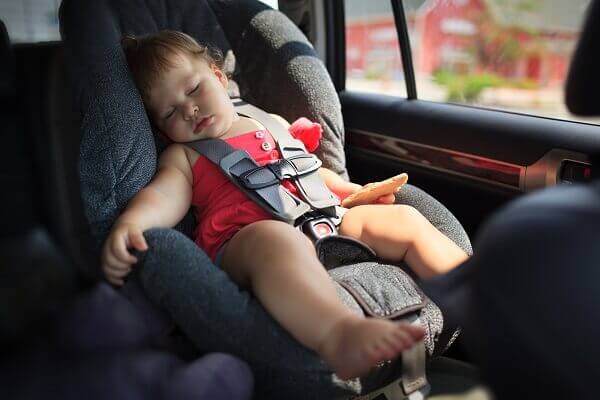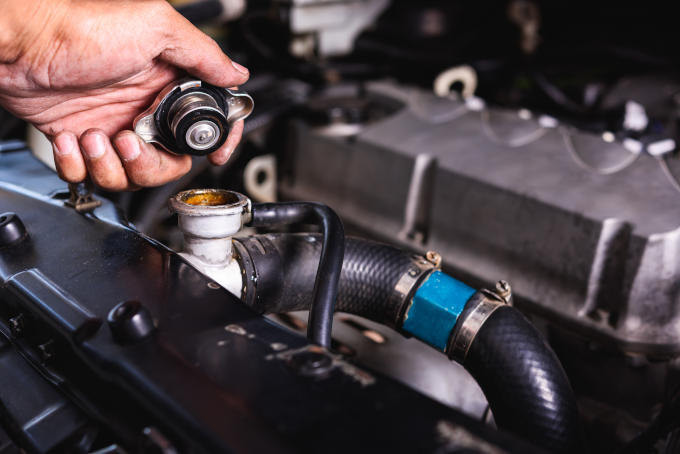It's an exciting time in your life and one you've prepared for as much as possible before the "big day" arrives - along with your new infant.
There are going to be so many milestones in your child's life, and want to make sure you are there for all of them.
The first step is getting your infant home safely.
91% of new parents leaving the hospital made at least one critical error when it came to infant car seats. This includes installation of the car seat and placement of the infant.
We're here to tell you how to properly install an infant car seat. To avoid common mistakes, read our tips below.
Choosing an Infant Car Seat
The first step is choosing the right infant car seat for you and your family. Any child one year or younger, or under 20 pounds must be in an infant rear-facing car seat.
Once a child reaches the age from 1-3 years old they may sit in a child rear-facing car seat. From the ages of 4 - 7 years old a child may sit in a front facing car seat. Some car seats are an all-in-one, so they grow with the child.
Each car seat has weight and height requirements. Read the instruction manual and know when your child may move up to the next car seat, or out of one entirely.
Installing the Base
Infant car seats typically come in two parts: the base and the infant carrier; the base will stay in the car.
The best placement for a car seat is in the middle of the back seat; children who sit in the middle are 43% safer than sitting behind the driver or passenger.
If you are worried about not being able to see your child, small mirrors that hang from the seat headrest and can be seen from the review mirror are available to purchase.
The Anchor System
Some car seats use an anchor system to it into the car. To install the base this way, check to see if the manufacturer included a belt attachment with two hooks - most do.
Attach the hooks to the metal bars on the base in the designated area. Tighten the anchor belt that is attached to the base until it is tight against the seat.
Some infant car seats have an area to feed the seat belt through the base as an extra safety feature.
Note: some model cars do not the option for anchor hooks in the middle seat. Using the anchor system on the side seats does not mean your child will be safest. Seat belt anchors work just as well.
The Seat Belt Feed
If your car seat does not use the anchor system, it will use the cars seat belt to secure the base.
Simply feed the seat belt through designated openings and buckle the belt. Make sure the belt is not twisted or snagged on anything.
This is an important step in ensuring your child's safety in case of an accident.
Once the base is installed, make sure it does not move more than 1 inch in any direction. Test it with a few hard tugs; if it seems too loose, tighten the anchors or seat belt until it is secured in place.
Attaching the Infant Carrier
Face the infant carrier so the child would be facing the seat and attach it to the base. It should click when it is in and secure.
To become more comfortable with this movement, practice taking the infant carrier out and putting it back in by using the lever or button on the side.
Checking the Angle
Once the infant car seat is in place, the next step is to check the angle of the seat.Rear-facing car seats have different angles they can rest in; infants need to sit at the most reclined angle to help them breathe properly.
The car seat will have an indicator on the angle your child should be in depending on age/height/weight. If you are unsure, the manual will offer the answer.
Once the child grows, remember to change the car seat setting to match.
Positioning Your Infant
Hooray! Your infant has finally arrived and it's time to take them home. Now is the most crucial moment to make sure your child is safe and sound.
Positioning your infant in the car seat as well as the straps and harness is the most important part when traveling with your infant.
Here are some tips to remember when traveling and positioning your infant in their car seat:
- remove any bulky clothing
- make sure they are lying flush against the seat
- straps should lay flat and snug, but not too tight
- the chest clip should be level with their armpits
- their shoulder straps should connect to the car seat at or right below their shoulders
If you need to tighten the harness, check your car seat manual for instructions on how to do so properly.
Growing Up & Out
Professionals encourage parents to keep their children in rear-facing car seats for as long as possible. However, know what your height/weight requirements are for your car seat manufacturer.
If it is a two-in-one car seat, read the manual to know how to correctly re-position the seat from rear facing to front facing.
Always be Prepared
Despite following all directions, manuals, and checking your work twice, it's always a good idea to have your work checked by a professional. There are child safety seat inspections so be sure to check your location.
As a parent, it is your job to ensure your child's safety and well-being.Keep your car serviced and up-to-date on appointments. During the winter remember to get your tires rotated and alignment checked.
Accidents happen and are sometimes unavoidable. Be prepared for when they do happen. Contact Overland Park AAMCO Total Car Care for service updates, or peruse their website for more information.










